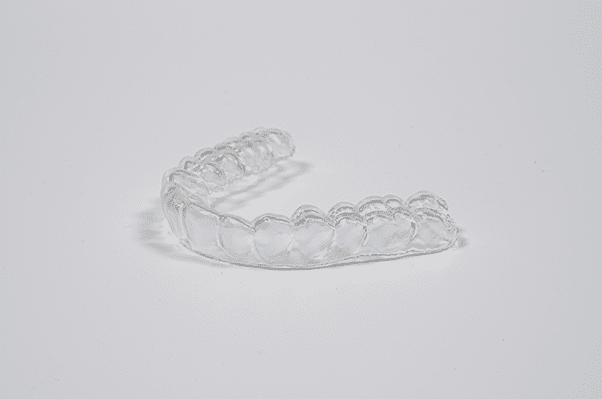Clear aligners are one of today’s most sought-after orthodontic treatments. Traditionally, orthodontists contract with an outside service to provide clear aligner treatments. Outsourcing to a provider has drawbacks for both the client and the dentist. It can take over a month to produce and deliver an aligner set, and the provider requires a substantial service fee, cutting into potential profits.
Advancements in 3D printing technology are improving the production of clear aligners. Today’s 3D printing solutions are widely available to both dental labs and private practices. Orthodontists can now choose between outsourcing aligner production to a lab or in-house production.

Outsourcing to a Dental Lab: The Pros and Cons
Independent dental labs have a faster turnaround time than name-brand facilities, generally taking two weeks to produce an aligner set rather than six to eight weeks. Orthodontic practices that partner with a dental lab benefit from the accelerated turnaround without needing to purchase a printing solution, learn new technology, or hire a tech.
Outsourcing does have a few drawbacks compared to in-house production, including:
- Higher Expenses: Lab fees cut into aligner profits. With in-house 3D printing of aligners, growing businesses can be more profitable and responsive to customers.
- Slower Appliance Turnaround: Although dental labs provide faster service than name-brand facilities, two-week turnarounds are long compared to same-day service enabled by the latest 3D printing technology used for in-house production.
- Potential Treatment Plan Setbacks: Periodic checkups are required throughout treatment to ensure the aligners fit and operate correctly. When aligners do not fit well for the patient’s teeth or do not move the teeth as planned, the treatment plan must be adjusted, and new aligners ordered. Lab turnaround times can add weeks for every adjustment, potentially lengthening treatment plans by weeks or months longer than initially projected.
In-house 3D printing production of aligners is the best option for practices that want more profitable and faster service.
3D Printing Aligners In-House: The Pros and Cons
Orthodontic practices that integrate a 3D printing solution into their operation gain full control over the workflow eliminate outside lab fees, and achieve faster production turnaround time. Aligner production can begin as soon as the patient is ready to undergo oral scans. Practices can provide same-day service depending on the patient queue. In a same-day appointment, an orthodontist can take oral scans, plan out treatment, and print and form the first aligner stages before the patient leaves the office or within a few hours of the appointment. The expedited service provides optimal customer service and an immediate customer lock-in advantage.
The accelerated turnaround reduces the treatment plan schedule setbacks caused by lost aligners, treatment plan adjustments, or ill-fitting aligners. If the treatment plan needs to be adjusted to account for unanticipated movement, 3D printers can produce new aligners in a single day. In the event of misplaced aligners, the increased production speed allows the patient to obtain a replacement set before their teeth drift out of alignment or go on a trip.
From a branding perspective, practices with in-house aligner production may also package the aligners in a way that promotes their office.
Amongst these benefits, starting in-house clear aligner production has two challenges:
- The printing solution needs to be either purchased or leased, requiring an upfront investment.
- The practice’s team must learn to operate the machine correctly or hire a knowledgeable technician to run production.
While 3D printing aligners in-house require that practices invest time and money, eliminating lab fees and the ability to provide same-day services justifies the investment by increasing profit margins, decreasing treatment timelines, and improving patient satisfaction.
Find a 3D Printer that’s Right for Your Office
In-house 3D printing accelerates aligner turnaround, increases profitability, and improves patient satisfaction while offering complete workflow control. Requiring little to no post-processing for 3D printed aligners, additive manufacturing companies are in the process of getting regulatory approval for use in markets. For practices that are interested in 3D printing aligners in-house, LuxCreo provides integrated solutions that fit different needs.
LuxaDent is a desktop dental 3D printing solution that provides practices with the software, hardware, and materials they need to produce clear aligners and other dental devices, such as night guards and retainers. Lux 3 Dental is an excellent option for orthodontists that have multiple locations. Lux 3 Dental is a high-throughput 3D printing solution capable of all-day, continuous production of aligners, retainers, and nightguard devices. Its leading printing speed and build volume enable high-volume production that meets demands for multi-location dental groups or dental labs.
To learn more about 3D printing aligners, visit our contact page or call (650) 336-0888.
